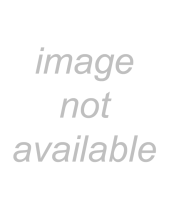Inventory models
12 important questions on Inventory models
Which inventory models are there?
- Fixed order-quantity models
- Economic order quantity (EOQ)
- Production order quantity (POQ)
- Quantity discount
- Probabilistic models
- Fixed order-period models
NB These models are meant for situations with
What are the 6 assumptions of Economic Order Quantity(EOQ)?
- Known and constant demand
- Known and constant lead time(=tijd tussen bestellen en ontvangen)
- Instantaneous(=ogenblikkelijk) and complete (=ontvangst) of material
- No quantity discounts
- Only ordering cost and holding cost
- No stockouts
What is the goal of EOQ? What do total costs consist of?
- The goal is to determine the quantity of products to order such that total costs are minimized
- Total costs consists of ordering costs and holding costs
- Higher grades + faster learning
- Never study anything twice
- 100% sure, 100% understanding
What are the 4 variables of the models?
- Q: order quantity (this is our decision variable)
- D: demand per period
- S: cost to place one orde (excl. Price of items)
- H: holding cost per unit per time period
What is the definition of lead time? And what of reorder point(ROP)?
- Lead time: time between placing an order and receiving it (or: time needed for producing the requested products)
- Reorder point(ROP): Inventory level at which a new order has to be placed to ensure timely(=tijdige) delivery
What is the formula of ROP and lowercase d?
- ROP= d * L
- d: demand per day
- L: Lead time (in dagen)
- d= D / workings days per year
What's the difference between the EOQ and POQ model? How do you formulate this formally?
- With the POQ model, you are
producing the products yourself. So you can already start selling them while you are producing more - Formally: All EOQ assumptions also apply to the POQ model, with the exception that in the POQ partial receipt(=ontvangst) of material is possible
What are 3 characteristics of the POQ model?
- There are time periods with production and time periods without production
- Products are sold continuously
- Production occurs in fixed quantities (Q)
What is the goal of the POQ model? What do total costs consist of?
- Goal is to determine the number of products per production run such that total costs are minimized
- Total costs consists of setup costs and holding costs
What is the formula of the setup cost? And what of the holding cost?
- Setup cost= (D/Q) * S
- Holding cost= (max. Inventory level)/2 * H = 1/2 * Q * (1 - d/p) * H
- Holding cost: moet je nog de producten die gelijk naar klant gaan vanaf halen!!
What are 5 characteristics of the fixed period model?
- Answers how much to order
- Orders placed at fixed intervals
- Inventory brought up(=gebracht) to target amount
- Amount ordered varies
- No continuous inventory count
- Possibility of stockout between intervals
- Useful when vendors(=verkopers) visit routinely
- Example: representative calls every 2 weeks to take order
- Hybrid form together with an order quantity model
- Useful in situation with highly uncertain demand
- E.g. With emergency orders
What are 3 characteristics of the quantity discount model?
- Answers how much to order & when to order
- Allows quantity discounts
- Reduced price when item is purchased in larger quantities
- Other EOQ assumptions apply
- Trade-off is between lower cost price & increased holding cost
The question on the page originate from the summary of the following study material:
- A unique study and practice tool
- Never study anything twice again
- Get the grades you hope for
- 100% sure, 100% understanding
































